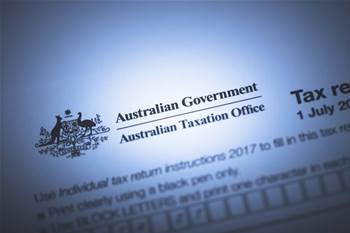The Australian Taxation Office is just weeks away from recontesting the first of its three largest technology contracts, as it looks to reduce duplication and cut operating costs.
More than three years after it flagged the plans, the national revenue agency will shortly begin issuing tenders that will lead to the biggest shakeup of its IT outsourcing in a decade.
The tenders will replace the long-held contracts across centralised computing, end user technology and enterprise service management centre (ESMC) services currently held by two providers.
Centralised computing – the largest of the three deals – is held by DXC under a 13-year, $2.1 billion contract, while the end user computing and ESMC contracts are held by Leidos.
All three deals have been in place since the ATO split up its monolithic IT outsourcing agreement with EDS (now DXC) and adopted a multi-sourcing strategy in 2009.
Since then, the ATO has progressively reduced its reliance on physical and virtual mid-range services in favour of public cloud from Amazon Web Services and Microsoft Azure.
At an industry briefing this week, chief information officer Ramez Katf said the overhaul was crucial to drive down BAU operational costs and free up funding to deliver future digital services.
Less funding is expected to be available to agencies in the coming years as the government resets its budget position, following the unprecedented support provided during the pandemic’s initial phase.
“The more we put in one bucket, the less we have available [in] another bucket, and where the value is for us is... trying to get as much of our investment to drive tech-enabled change,” Katf said.
“In order to drive that, we’ve got to focus on reducing all the rest, obviously without compromising our resilience and our cyber posture.”
At the same time, however, the ATO – one of the government’s key service delivery agencies –need to continue operating in a 24x7 environment, responding to increasing demand for digital services.
“Between 80 and 90 percent of the interactions with the Tax Office are now through digital channels and with very little manual intervention,” Katf said.
“So our reliance on our technology and its importance to us cannot be overemphasized.”
From three to nine
Like it did with managed network services, the ATO is planning to split the three contracts into nine smaller, more modular bundles, removing overlap where possible.
It also plans to merge two smaller contracts that provide a customer-facing technical help desk and performance monitoring.
Katf said that the new bundles would be better aligned with the market and help the ATO comply with whole-of-government policy, including value and term caps on contracts.
The ATO has spent the last year refining its intended approach, having issued a request for information in May 2021.
Leidos’ ESMC contract, for instance, will be separated in three bundles, with the core elements of the existing contract to become a “dedicated enterprise service management (ESM) bundle”.
The remaining aspects will move to an enterprise operations and technical enablement bundle, and end user experience and IT service desk bundle.
A different “outsourcing pattern” is expected to be adopted for each bundle, depending on the level of control the ATO wishes to retain.
ESM, enterprise operations and technical enablement, cyber augmentation and mainframe services will form the first wave of tenders, to be release in late March or April.
The ATO then plans for a second wave of tenders in May or June (service desk and end user experience) and a third wave in July or August (mid-range and hyperconverged infrastructure).


























